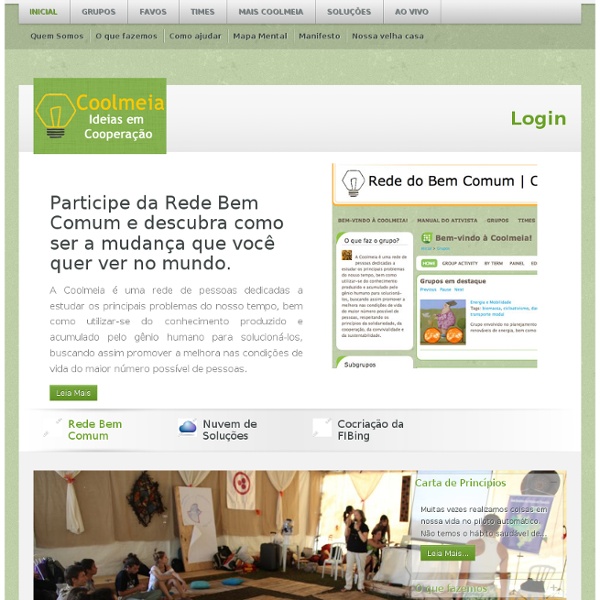



Group Systems CURSO - Digital Citizenship Consensus decision-making Members of the Shimer College Assembly reaching a consensus through deliberation. Consensus decision-making is a group decision-making process that seeks the consent of all participants. Consensus may be defined professionally as an acceptable resolution, one that can be supported, even if not the "favourite" of each individual. Consensus is defined by Merriam-Webster as, first, general agreement, and second, group solidarity of belief or sentiment. It has its origin in the Latin word cōnsēnsus (agreement), which is from cōnsentiō meaning literally feel together.[1] It is used to describe both the decision and the process of reaching a decision. Objectives[edit] As a decision-making process, consensus decision-making aims to be:[2] Alternative to common decision-making practices[edit] Consensus decision-making is an alternative to commonly practised adversarial decision-making processes.[5] Robert's Rules of Order, for instance, is a process used by many organizations. Decision rules[edit]
Cidadania em Rede SIBITE Introducing PyBossa – the open-source micro-tasking platform For a while now our network has been working on applications, tools and platforms for crowd-sourcing and micro-tasking. At the end of last year, we posted about a cute little app developed at a hackday called the Data Digitizer that was being used to transcribe Brazillian budgetary data. In recent months we’ve been working closely with the Citizen Cyberscience Center on an exciting new platform called PyBossa. In a nut-shell, PyBossa is a free, open-source crowd-sourcing and micro-tasking platform. It enables people to create and run projects that utilise online assistance in performing tasks that require human cognition such as image classification, transcription, geocoding and more. With PyBossa we want to make the creation of such potentially transformative projects as easy as possible and so PyBossa is different to existing efforts: You can read more about the architecture in the PyBossa Documentation and follow the step-by-step tutorial to create your own apps. Demos The Future
How it Works Here is how the Crowd Wise method can be implemented in practice through four easy steps: Starting with an open question, which could be anything from ‘what should we spend our money on next year’ to ‘ what’s the best way to tackle urban poverty? . A range of options is developed, as opposed to just two alternatives: A range of options is considered as opposed to just two alternatives: Options can be pre-developed or defined as part of an event. An initial Consensus Vote takes place - stakeholders rate the options according to their preference: Results from this initial phase are counted and recorded. • options are now discussed constructively amongst stakeholders (this process can take place over 2 – 3 hours or a much longer period) • understanding amongst all parties increases; there is openness to other people’s point of view • as the discussion progresses, options start to get modified or merged to reflect growing consensus • a second Consensus Vote helps identify where consensus lies
The Teacher's Guide To Digital Citizenship How you act online is important. Not just because everything is stored, backed up, and freely available to anyone with a keyboard. But because your online reputation is actually just your reputation. There’s really no difference between online and offline anymore. In an effort to keep everyone behaving, Microsoft has just unveiled a new (free) curriculum that’s all about digital citizenship , intellectual property rights , and creative content . It offers cross-curricular classroom activities that align with the AASL and ISTE national academic standards. How It Works Four units comprise the curriculum resources. Each unit has 4-6 of these project-oriented activities, one of which serves as the culminating lesson for the unit. The following is simply a description of each unit followed by the learning objectives for that particular unit. Unit One: Creative What? This unit explores the general topics of intellectual property, creative content , and creative rights. Unit Two: By Rule Of Law
Demoex Origem: Wikipédia, a enciclopédia livre. Democracia experimental (Demoex) 1 , um partido político sueco local, é uma experiência em democracia direta eletrônica, com votações pela internet, que teve início durante um seminário denominado "TI - Tecnologia da Informação e a Democracia" realizado em outubro de 2000 numa escola de Vallentuna, um subúrbio de Estocolmo 2 . Uma das razões de sua criação, além do desencanto generalizado com os políticos tradicionais, foi o fato de que na democracia representativa a opinião do Povo só é consultada uma vez a cada quatro anos. As discussões que se iniciaram naquele seminário, tanto online como na vida real, levaram um grupo de estudantes e professores a fundar um partido político Demoex, sem ideologia (no significado direita-esquerda), sem plataforma, e sem sede física, e que só tinha uma promessa: a democracia direta. Representação na câmara municipal de Vallentuna[editar | editar código-fonte] Ideologia[editar | editar código-fonte] Referências